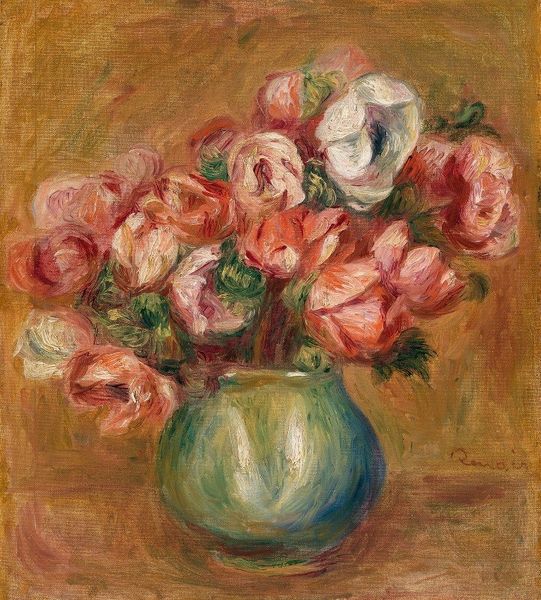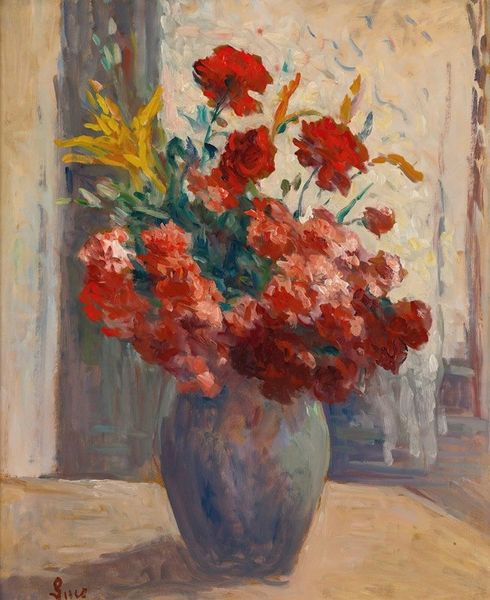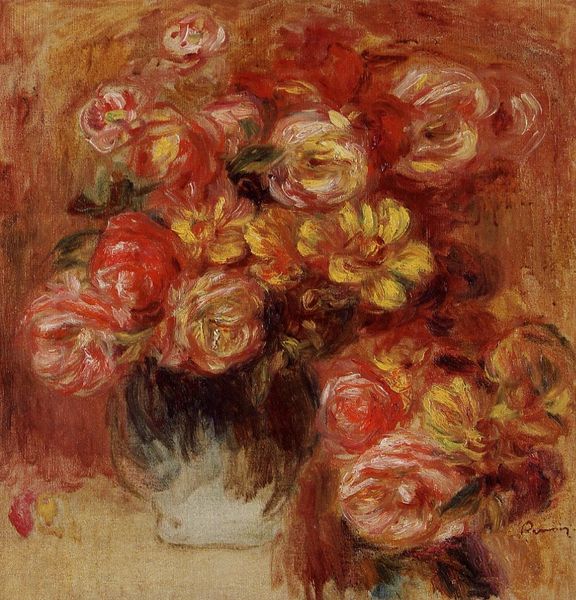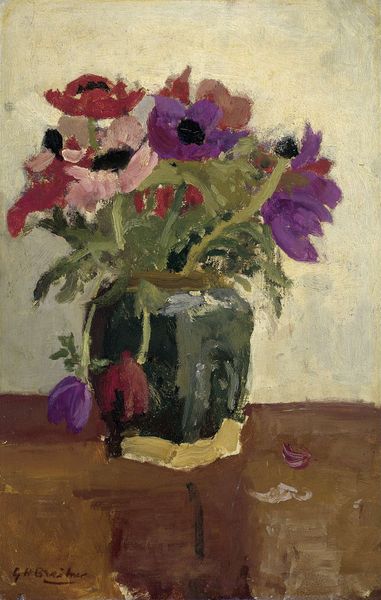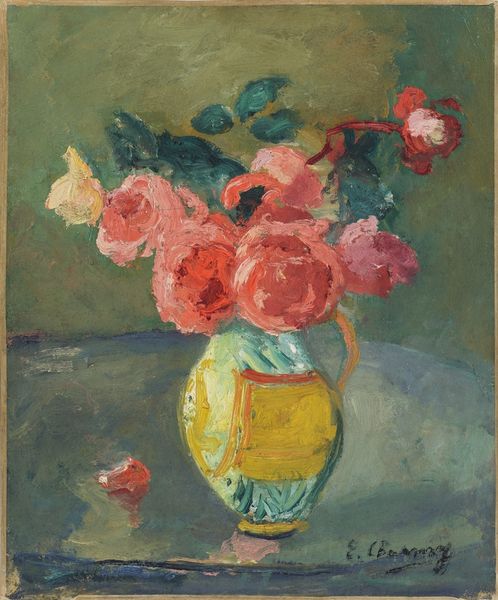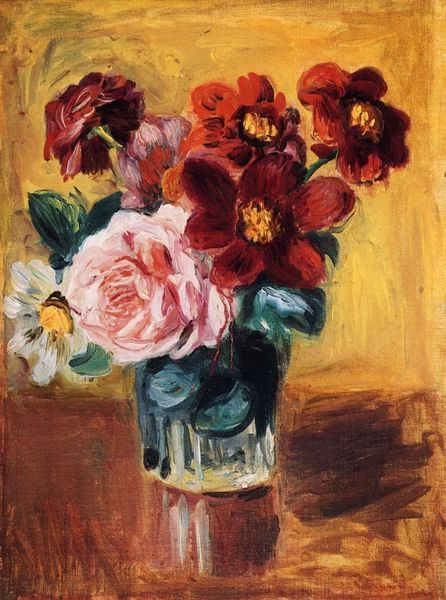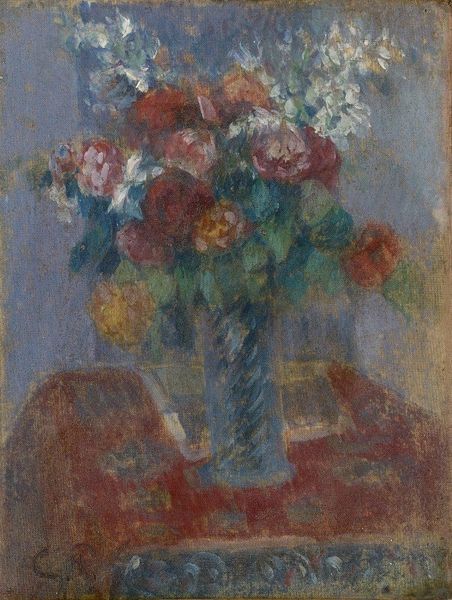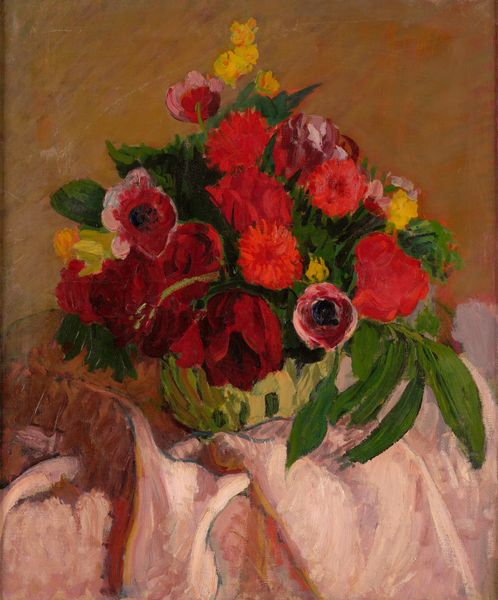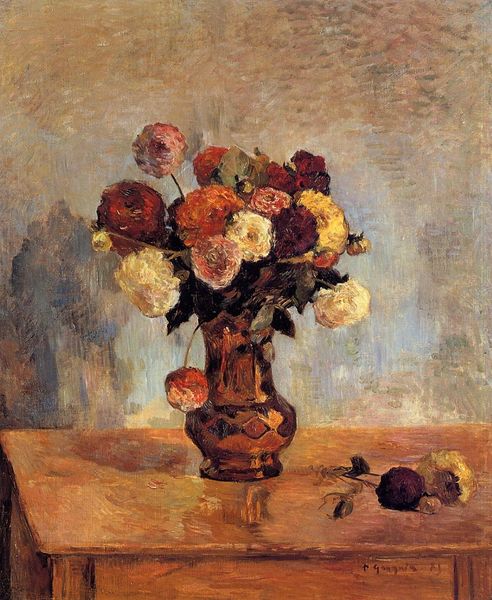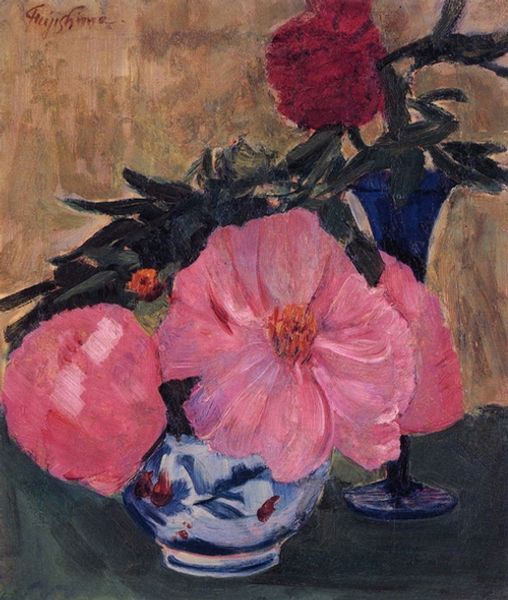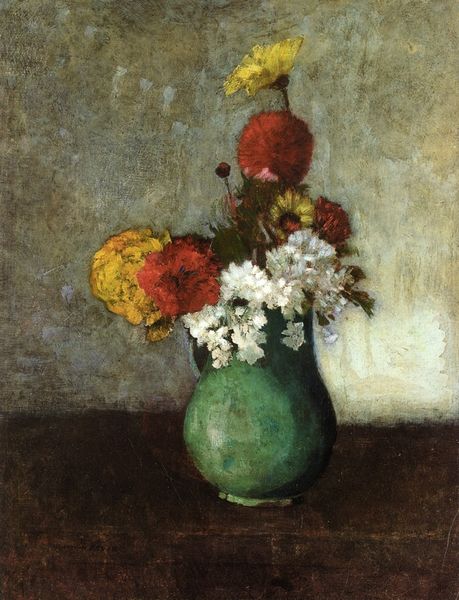
Copyright: Public domain
Editor: Here we have Albert Marquet’s "Bouquet of Flowers," painted in 1898. It’s a simple still life, but something about the way the colors are muted, almost somber, gives it an introspective feel. How do you interpret this work? Curator: I think your immediate impression is quite astute. While seemingly a traditional still life, this work exists within a crucial moment of artistic and social upheaval. Let's consider the historical context: painted in 1898, what’s happening in France and globally? Editor: Well, politically, it's after the height of Impressionism, but before the full boom of Fauvism and Cubism. Socially… maybe some tension between tradition and modernity? Curator: Precisely. This tension manifests in the very subject matter and style. Flowers, historically associated with femininity and domesticity, are presented here with a certain unease. Note the loose brushstrokes, rejecting academic polish. Does that reading sit well with you? Editor: That's really interesting! I see what you mean about the rejection of traditional beauty. It feels like a quiet rebellion, using traditionally "feminine" subject matter but doing it in a way that isn't delicate or precious. Curator: Exactly. Perhaps Marquet is subtly questioning the societal expectations of both art and gender roles within the rapidly changing cultural landscape. Consider also, who typically had access to creating or consuming such art in 1898? What stories are absent here? Editor: Hmm, the lack of representation from marginalized groups, definitely. The flowers themselves, their colours, seem like they could represent certain groups as well? Curator: Indeed. Exploring those silences and unspoken narratives is just as crucial as what we see explicitly represented. What are you taking away from this experience? Editor: I'll never look at a floral painting the same way again. It is amazing to learn about art and its context. Thanks! Curator: My pleasure! Hopefully it helped understand the power of context, and to use this to enrich your approach when facing any piece of art!
Comments
No comments
Be the first to comment and join the conversation on the ultimate creative platform.
